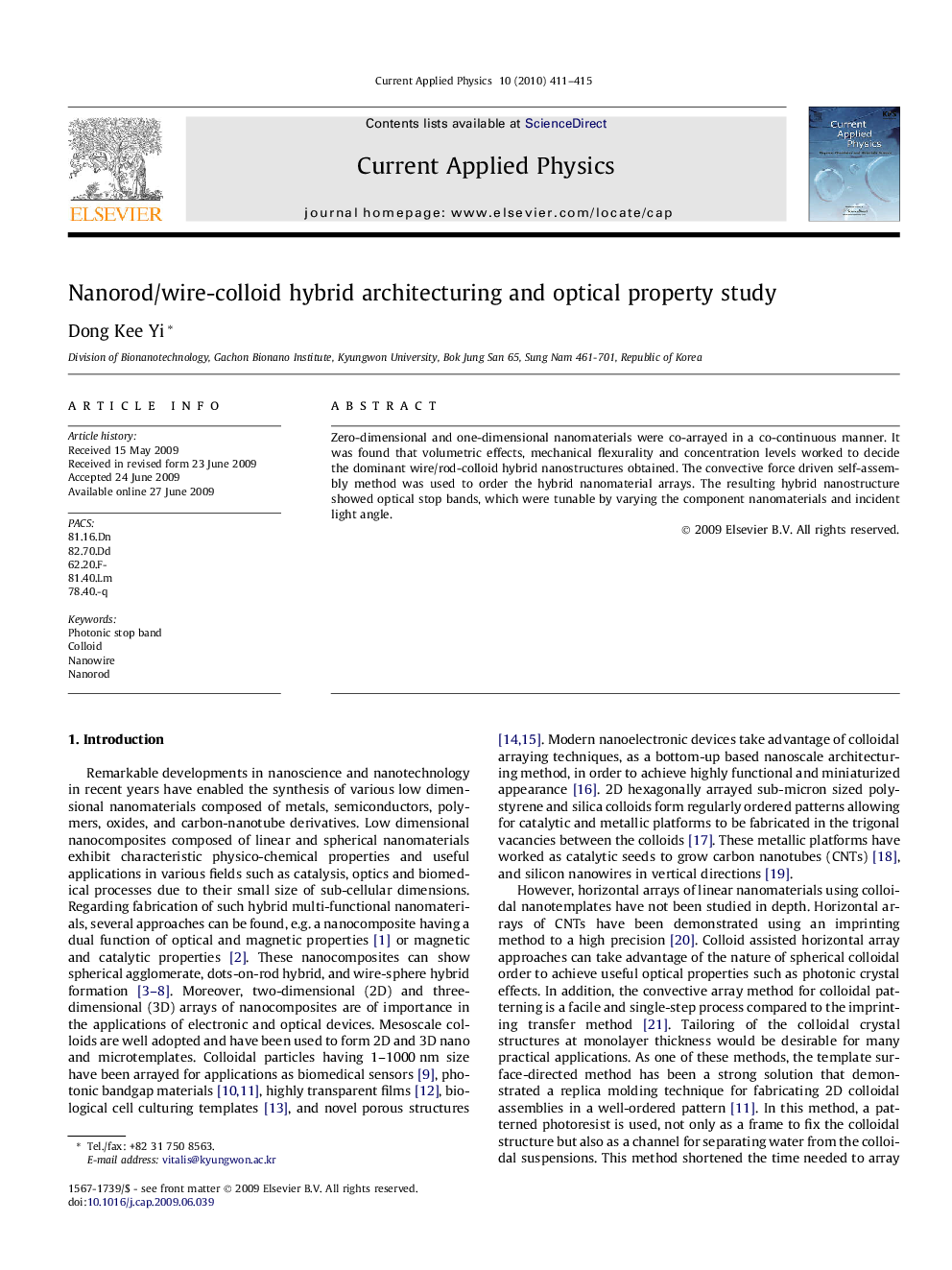| Article ID | Journal | Published Year | Pages | File Type |
|---|---|---|---|---|
| 1788654 | Current Applied Physics | 2010 | 5 Pages |
Abstract
Zero-dimensional and one-dimensional nanomaterials were co-arrayed in a co-continuous manner. It was found that volumetric effects, mechanical flexurality and concentration levels worked to decide the dominant wire/rod-colloid hybrid nanostructures obtained. The convective force driven self-assembly method was used to order the hybrid nanomaterial arrays. The resulting hybrid nanostructure showed optical stop bands, which were tunable by varying the component nanomaterials and incident light angle.
Related Topics
Physical Sciences and Engineering
Physics and Astronomy
Condensed Matter Physics
Authors
Dong Kee Yi,
